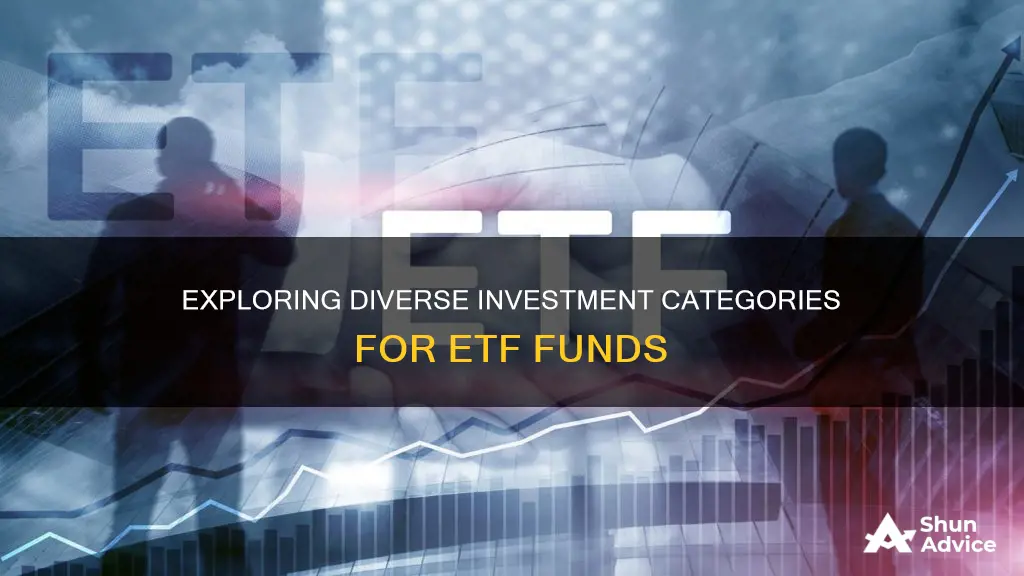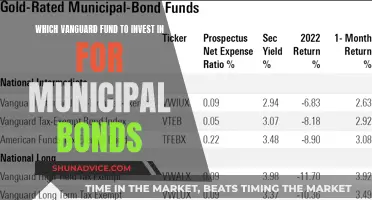
Exchange-traded funds (ETFs) are a type of investment fund that offers the best of both worlds: the diversification benefits of mutual funds and the ease of stock trading. ETFs are baskets of investments like stocks or bonds that allow investors to invest in many securities all at once. They are traded on exchanges, much like stocks, making them extremely liquid.
There are several different categories of ETFs, including:
- Passive and Active ETFs: Passive ETFs aim to replicate the performance of a specific index (e.g. S&P 500), while Active ETFs seek to outperform a given index.
- Asset Class ETFs: These typically invest in a single asset type, such as stocks or bonds, and can help investors satisfy specific investment objectives.
- Sector ETFs: These focus on specific sectors or industries, such as healthcare, technology, or consumer.
- Geography ETFs: These include international and global ETFs, which cover regions outside the United States and a combination of international and U.S. regions, respectively.
- Growth and Value ETFs: Growth ETFs invest in companies expected to achieve future earnings increases, while Value ETFs invest in companies considered bargains or selling at a discount relative to their peers.
- Size ETFs: These specialize in different market capitalizations, such as small-, mid-, or large-cap companies.
- Commodity ETFs: These invest in commodities like crude oil or gold and can diversify a portfolio, making it easier to hedge against market downturns.
- Currency ETFs: These track the performance of currency pairs, allowing investors to speculate on currency prices and hedge against volatility.
- Bond ETFs: These are used to provide regular income to investors, with distributions depending on the performance of underlying bonds.
- Stock ETFs: These are baskets of stocks that track a single industry or sector, providing diversified exposure to high performers and new entrants with growth potential.
- Industry or Sector ETFs: These funds focus on specific sectors or industries, such as the energy sector.
- Bitcoin or Crypto ETFs: These expose investors to the price movements of cryptocurrencies like Bitcoin or Ethereum within their regular brokerage accounts.
- Inverse ETFs: These allow investors to profit from stock declines by shorting stocks, using derivatives to bet against their performance.
- Leveraged ETFs: These aim to return multiples of the underlying investment's performance (e.g., 2x or 3x) and use debt and derivatives to leverage their returns.

Bond/Fixed-Income Funds
Bond ETFs allow investors to gain passive exposure to benchmark bond indices in an inexpensive way. They are available for various bond categories, including Treasuries, corporates, convertibles, and floating-rate bonds. Bond ETFs are also amenable to laddering, a strategy that uses bonds of different maturities to reduce interest rate risk.
Bond ETFs trade throughout the day on centralised exchanges, making it easier for investors to find attractive prices compared to individual bonds, which are sold over the counter by bond brokers. They also provide more liquidity and transparency than individual bonds and mutual funds, which trade at one price per day after the market closes.
Bond ETFs can help investors gain fixed-income exposure and are a great option for those who want to add diversification to their portfolios. They can be used for speculation, income, or protection, depending on the investor's objectives and risk tolerance.
The Best Places to Invest in Exchange-Traded Funds Directly
You may want to see also

Sector ETFs
Most sector ETFs focus on U.S.-based stocks, but some invest globally to capture the worldwide performance of the sector. Assets in sector ETFs are passively managed around an underlying index, with some funds using indexes provided by data services such as Standard and Poor's and Dow Jones. Leveraged sector ETFs are also available, aiming to achieve double the returns of the underlying index on both advancing and declining trading days.
Some examples of sector ETFs include:
- Consumer Discretionary: XLY
- Consumer Staples: XLP
- Information Technology: SMH
- Communication Services: XTL
Best Funds to Invest in: How to Choose
You may want to see also

Country ETFs
Some examples of country ETFs include those that track the markets of China, Brazil, Japan, Israel, and the United Arab Emirates. There are also country ETFs that track a wide range of foreign markets, such as emerging market economies and developed market economies.
Like other types of ETFs, country ETFs can be actively or passively managed. Actively managed ETFs seek to outperform a given index and involve fund managers making deliberate decisions about which securities to include in the portfolio. On the other hand, passively managed ETFs aim to replicate the performance of a broader index, such as the S&P 500.
Bond Index Funds: Choosing the Right Investment for You
You may want to see also

Commodity ETFs
When investing in a commodity ETF, it is important to understand that you are not purchasing a physical asset. Instead, you own a set of contracts backed by the commodity itself. Many commodity ETFs also use leverage by purchasing derivative contracts, which can result in large portions of uninvested cash. This cash is often used to purchase Treasury securities or other low-risk assets.
Some popular types of commodities that are commonly found in these ETFs include precious metals (such as gold and silver), oil and gas, and agricultural goods.
Index Funds: Smart Savings or Risky Business?
You may want to see also

Stock ETFs
- Diversification: Stock ETFs provide instant diversification by allowing investors to access a wide range of equities within a single fund, reducing the risk associated with investing in individual stocks.
- Low Cost: Stock ETFs have lower fees compared to stock mutual funds and do not involve direct ownership of securities. They also offer lower expense ratios and fewer broker commissions than buying individual stocks.
- Tax Efficiency: Stock ETFs are considered more tax-efficient than mutual funds because share purchases and sales occur through an exchange, reducing tax liabilities.
- Flexibility: Stock ETFs can be traded throughout the trading day, providing investors with greater flexibility.
There are two main types of stock ETFs:
- Passive ETFs: These aim to replicate the performance of a broader index or trend, such as the S&P 500 or Dow 30. They have lower fees but may offer more limited returns compared to actively managed ETFs.
- Actively Managed ETFs: These ETFs have portfolio managers who make deliberate decisions about which securities to include in the fund. Actively managed ETFs may outperform passive ETFs but typically come with higher fees.
Mutual Fund SIPs: Where to Invest for Maximum Returns
You may want to see also







